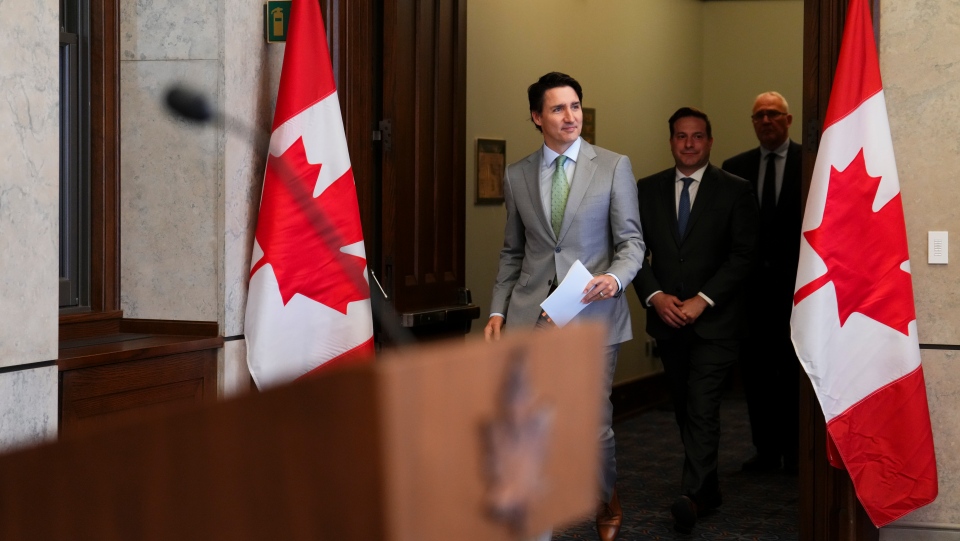By now, the Canadian landscape has been painted with the dramatic strokes of controversy surrounding the death of Hardeep Singh Nijjar. With Prime Minister Justin Trudeau accusing India, sans evidence, of links to Nijjar’s killing, it is high time we take a step back and ask: who was Hardeep Singh Nijjar? And why is Canada so invested in this episode?
The Sinister Shadow of Nijjar
At 46, Nijjar wasn’t just a member of the local Sikh community; he was a terror mastermind with deep roots in Khalistani extremism. A fugitive from India, Nijjar had been prominently linked to multiple terrorist organizations. As the chief of the Khalistan Tiger Force (KTF), his hands were stained with the plotting of the Hindu priest’s assassination. He also associated himself with the Sikhs For Justice, another notorious extremist group, orchestrating anti-India activities. His social media pages? A veritable library of sedition, hatred, and attempts to ignite communal discord.
Nijjar’s terror lineage is not just a smattering of isolated events; it’s a chronology of grave acts of violence that have left an indelible mark. The 2007 bomb blast at Shingar cinema in Ludhiana? Orchestrated by him. The cold-blooded assassination of Rashtriya Singh Sangat’s President, Rulda Singh, in 2009? His doing. A conspiracy to eliminate Hindu priest Kamaldeep Sharma in Jalandhar, the explosion at the Satya Narayan temple in Patiala in 2010, and the plotting of the assassination of spiritual leader Piara Singh Bhaniara – all bore the unmistakable touch of Nijjar’s terror designs. Even as recently as 2015-16, he directed Mandeep Singh Dhaliwal to target Shiv Sena leaders.
And the global community took note: on 01 July 2020, a red corner notice was issued against him, designating him as an ‘Individual terrorist’ under the Unlawful Activities Prevention Act (UAPA). This was not merely a rogue individual but a calculated menace with a track record to match.
When a nation’s top investigating agency, the NIA, declares a reward for information leading to the capture of such an individual, it paints a sombre picture of the threat he poses.
Canada’s Troublesome Liaison
For years, Nijjar had spun a web of lies to evade Canadian immigration authorities. Portraying himself as a victim of police torture, he used fabricated letters and even staged a sham marriage to stake his claim to residency in Canada. Although his stories were often rejected, he still managed to operate under the Canadian radar, even identifying himself as a citizen.
Prime Minister Trudeau’s acknowledgment of Nijjar as a Canadian citizen in his recent statements, therefore, stands as an unsettling testament to Canada’s potential complicity in sheltering extremists. While Canada has a proud tradition of supporting human rights and providing refuge to those in need, harbouring individuals with clear extremist ideologies is a different ball game.
Embracing such individuals doesn’t just imperil Canada’s national security. It sends out a stark message to the global community: that Canada might be becoming a safe haven for those with extremist views. In trying to appease a select few, Trudeau risks compromising Canada’s standing on the global stage. The lack of support from G7 allies, evident by their refusal to issue joint statements against India, underscores this sentiment.
Safeguarding Canada’s National Integrity
It is an age-old principle that harbouring a snake can endanger the one providing shelter. With Nijjar’s extensive violent background and the current geopolitical scenario, Trudeau’s allegations against India without substantial evidence run the risk of painting Canada in a precarious light.
Canada, known for its majestic landscapes, multicultural ethos, and global diplomacy, should remain a beacon of hope, not a refuge for extremism. It’s high time the Canadian leadership differentiates between genuine asylum seekers and those with sinister motives. After all, the safety and reputation of a nation should never be traded for political appeasement.

